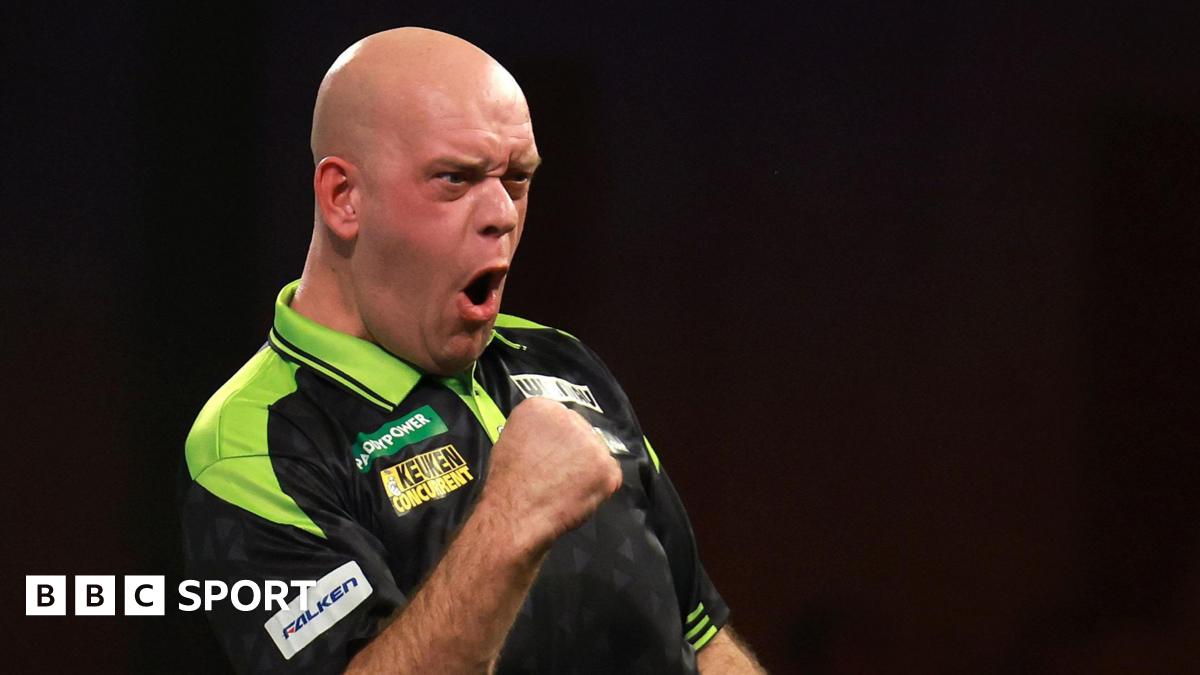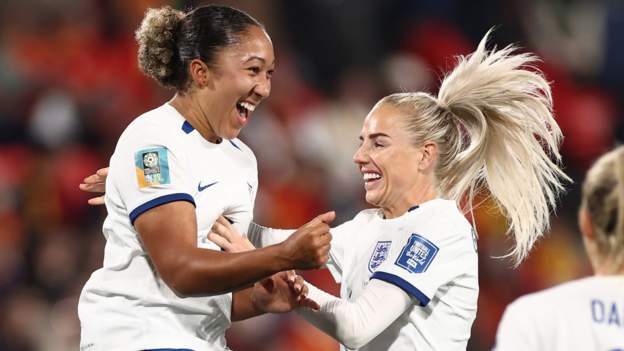The 2023 World Cup contributed to an increase in women’s sport viewing figures this year, according to data from the Women’s Sport Trust (WST).
International women’s sporting events were watched by viewers for nine hours 58 minutes on average, the WST found.
Golf’s Solheim Cup, England women’s cricket team and the Netball World Cup also attracted significant interest.
“There is still more to be done in translating international success into [regular] viewing,” the WST said.
An audience of 21.2 million watched the BBC’s television coverage of the Women’s World Cup in July and August.
The Solheim Cup was watched for a total of 9.5m hours, up from 6.3m hours in 2021 – and it was also noted 33% of the competition’s viewers did not watch the Ryder Cup, “showcasing a unique audience for women’s golf”.
The Women’s Six Nations was the most-viewed edition so far with 10.4m viewing hours, up from a previous best of 7.7m in 2022, and the Red Roses series this summer earned 234,000 views despite only being available online.
England women’s cricketers attracted 7.4m viewers, beating the previous record of 6.2m, while the Netball World Cup saw an increase from 4.5m viewers in 2019 to 5.6m.
Domestic cricket suffered a decrease in viewership, however, with a 15.5% fall in average audiences for the Women’s Hundred in 2023 – although viewing hours did increase by 14.2%.
And Women’s Super League (WSL) viewing hours are down 25.8% on last season amid a decline in coverage hours.
According to the WST, Sky’s average audiences for the WSL have declined 20.5% year-on-year while the BBC, which has shown one match fewer that at this stage last year, has seen a slight increase.
That rise was helped by the average audience of 746,000 which watched Arsenal v Aston Villa, making it the second most-watched WSL game on record.
“We have entered a new phase of visibility. The industry is moving past looking at top line figures and is starting to delve deeper,” said Tammy Parlour, WST chief executive and co-founder.
“This will lead to more understanding of what is going to work on a domestic level to drive further viewership.
“Women’s sport could be compared to a start-up, and like any new industry needs to be allowed the space to test and learn, to know what is going to work best for this new and exciting audience opportunity.”























